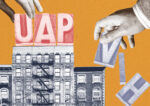New York is a city of renters. The City Council wants to change that, but the Adams administration warns that a tug of war of city resources could result.
The Committee on Land Use held a hearing on Thursday to discuss a bill that would require that at least 6 percent of all affordable housing units built with city subsidies are for sale, rather than rented out.
That requirement would start in 2026, and the threshold would be considered met if the average of five consecutive years equaled or exceeded 6 percent. However, each of those years would need to reach at least 2 percent. Since 2014, only 3 percent of newly constructed units subsidized by the city were for sale, rather than rentals, according to the City Council.
Under the measure, at least half of the homeownership units must be new construction. Subsidy used to convert rentals to homeownership units, as well as down payment assistance, would also count toward the total.
The homes would initially be made available to those earning between 70 and 165 percent of the area median income.
The Department of Housing Preservation and Development “supports the goal” of the legislation but warned against setting a fixed number of units.
“[The] rigid pipeline requirements would limit HPD’s ability to maximize our resources in each closing cycle as effectively and efficiently as possible, and even potentially result in money or projects left on the table,” said Kim Darga, HPD’s deputy commissioner of development.
Those abandoned projects could include new affordable rental housing or preserving existing homeownership properties, she said. This balancing act is further complicated by the rise in project costs, partially driven by high interest rates, which mean city dollars do not go as far.
“We’re trying to do as much as we were five years ago, without the resources to necessarily do it,” she said.
Darga said financing homes through the city’s Open Door program, which has created 451 for-sale units across 10 projects since 2017, requires two times as much city subsidy as new affordable rental homes. The Affordable Neighborhood Cooperative Program requires three times as much city subsidy, she said.
Council Speaker Adrienne Adams, who sponsored the bill, kicked off the meeting by recounting how her family’s ability to buy a home in Jamaica, Queens, allowed them to stay in the community. New Yorkers have seen such opportunities, a key avenue to building generational wealth, disappear,
“The lack of affordable homeownership opportunities is pushing more and more working- and middle-class families to leave the city they love,” she said, as part of prepared remarks. She pointed to the fact that only 28 percent of Black households and about 17 percent of Latino households in the city are homeowners, compared to nearly 43 percent of white households.
The lack of housing supply has driven up costs, for renters and homeowners. The dearth of starter homes means more potential first-time homebuyers are stuck being renters for longer, which keeps more rental supply off the market and drives up demand. Darga said that while HPD is committed to preserving and expanding homeownership opportunities, New Yorkers experiencing “acute housing instability and living in poor quality housing” require the city to build as much affordable and supportive housing as possible. Shifting money from rental to homeownership isn’t going to obviate that need.
On Thursday, HPD announced the relaunch and expansion of its HomeFix program, which provides low- to no-interest loans to one- to four-family homeowners for repairs. The agency is partnering with the Center for New York City Neighborhoods to help 450 homeowners over the next three years, providing loans of up to $150,000 per unit.
The administration is pushing for passage of the City of Yes for Housing Opportunity, which includes changes aimed at making it easier to build more housing in low-density areas, where height, yard and other requirements have made it difficult to build anything other than single-family homes. Elected officials in Queens have been among the most vocal against the text amendment, pushing back against the prospect of homeowners adding accessory dwelling units to their properties and the proposal to eliminate parking requirements for new residential construction.
Read more


